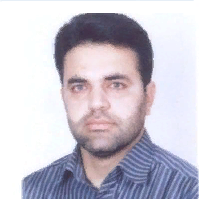International Journal of Modern Education and Computer Science (IJMECS)
IJMECS Vol. 5, No. 12, 8 Dec. 2013
Cover page and Table of Contents: PDF (size: 1717KB)
Design and Optimization of Eddy Current Testing Probe Using Bees Algorithm and Finite Element Analysis
Full Text (PDF, 1717KB), PP.40-46
Views: 0 Downloads: 0
Author(s)
Index Terms
Eddy current testing, Heat exchanger tubes, Bees algorithm (BA), Finite element analysis (FEA).
Abstract
Eddy current testing (one of the non-destructive testing-NDT) is used to investigate heat exchanger tubes and detecting any possible faults in these tubes. Main aims of this paper determine the optimum design of a probe in order to improve sensitivity and inspection system performance. Firstly, this paper presents equations related to designing and characteristics of the probe to investigate sample tubes. Then, optimum design is presented in order to reach the highest signal to noise ratio (SNR) and sensitivity (S) using Bees Algorithm-BA. Finally, eddy current testing is performed for optimum probe using finite element analysis (FEA).
Cite This Paper
H. Reza Parsa, S. AsgharGholamian, Majid Abbasi, "Design and Optimization of Eddy Current Testing Probe Using Bees Algorithm and Finite Element Analysis", International Journal of Modern Education and Computer Science (IJMECS), vol.5, no.12, pp.40-46, 2013. DOI:10.5815/ijmecs.2013.12.06
Reference
[1]INTERNATIONAL ATOMIC ENERGY AGENCY, "Eddy Current Testing at Level 2, Manual for the syllabi contained in IAEA-TECDOC-628.Rev2", Training Course Series No. 48, IAEA, Vienna, 2011.
[2]PengXu, "Eddy current testing probe composed of double uneven step distributing coils for crack detection", Published PHD thesis, Sega University, China, 2008.
[3]P. Xiang, "Automatic multi-frequency rotating-probe eddy current data analysis", Published PHD thesis, Iowa State University, USA, 2005.
[4]S. Tumanski, "Induction coil sensors-a review", Meas Sci. Technol, Vol. 18, pp. R31– R46, 2007.
[5]C. L. B. Shuddemagen,"The magnetizing factors for cylindrical iron rods. Proceedings of the American Academy of Arts and Sciences", Vol. 43, No. 6, pp. 185-256, 1907.
[6]W. Richter, "Induction magnetometer for biomagnetic fields". Exp. Technic Phys, Vol. 27, pp. 235-243.
[7]D.T. Pham, A. Ghanbarzadeh, E. Koç, S. Otri, S. Rahim, M. Zaidi, "The Bees Algorithm – A Novel Tool for Complex Optimization Problems, Manufacturing Engineering Centre", Cardiff University, Cardiff CF24 3AA, UK.
[8]K.V. Frisch,"Bees: Their Vision, Chemical Senses and Language", Cornell University Press, N.Y., Ithaca, 1976.
[9]TD. Seeley, The Wisdom of the Hive: "The Social Physiology of Honey Bee Colonies", Massachusetts: Harvard University Press, Cambridge, 1996.
[10]E. Bonabeau, M. Dorigo, G. Theraulaz, "Swarm Intelligence: from Natural to Artificial Systems", Oxford University Press, New York, 1999.
